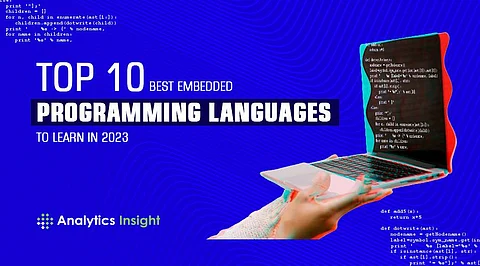
- Insights
- Cryptocurrencies
- Stocks
- White Papers
- Industry
- Geography
- Insights
- Cryptocurrencies
- Stocks
- White Papers
- Industry
- Geography


We employ embedded systems in our daily lives to make life easier. Because these embedded systems must have a specified set of features, developers program them using certain programming languages. Now let's briefly discuss embedded systems and go through the top programming languages to develop embedded systems.
Have you ever wondered whether video game systems are software or hardware? It combines the two. We all understand that software is the collection of instructions used to operate a physical device, whereas hardware is just the mechanical parts of any system. Both may work together to accomplish fantastic things. An embedded system is a set of hardware and software for computers. Microprocessors and microcontrollers, which are components of embedded systems in 2023, govern the digital world we live in today. Embedded systems are employed in anything from home electronics to business applications like robots.
Due to its effectiveness, C is the most used embedded computer programming language. The C programming language is used to create around 80% of embedded devices. It is portable, irrespective of the type of processor, and structured. Without a lot of adjustments, it might run on several systems.
The C programming language, which is used to create programs for microcontrollers, has been extended to create embedded c However, you must comprehend the distinction between C and Embedded C if you intend to start programming embedded computers using embedded C.
C++ is another language that is frequently used in embedded systems due to its excellent stability. Numerous embedded systems, including IoT, employ C++. If you plan to utilize C++ for embedded systems in real time, you must exercise caution. Because memory must be allocated at program startup, a memory pool must also be formed before any dynamic memory allocations can take place.
Though Python is more modern than C/C++, it has lately gained popularity owing to its ease of use. Additionally, Python has been ranked top in the annual IEEE spectrum rating of programming languages since 2017 up till the present. An embedded software engineer does not need to spend as much time compiling Python as they would with compiler languages since it is an interpreted language.
Java is a great option for embedded systems since it can quickly reduce costs. For GUI applications with more than five screens, Java is strongly advised. Java is dependable and easily portable, like many other languages. The capability of remote debugging is provided.
Ada is renowned for its dependability and safety. Ada is a challenging language to learn, but it looks to be the best option for real-time applications. In contrast to Ada, pointers may be considered as data sets and integrals in the C programming language. The language C might not be able to help you if you need to write millions of lines of code.
For embedded systems, using Assembly might lead to a system that is quicker and uses less memory. It is a basic programming language that can communicate directly with computer hardware. It moves quickly and with rather light execution. Mnemonics are used in assembly language, which is akin to machine language. As a result, assembly language is challenging to comprehend and maintain and tough to master.
Because of its great efficiency, numerous safety features, typestate programming approach, and zero-cost abstractions, Rust is a suitable language for embedded systems programming. Rust supports managing memory both dynamically and statically using a variety of techniques. Small microcontrollers to huge, complex systems may all be programmed using the Rust programming language. Rust has a sizable community that supports it as an embedded systems programming language.
Lua has a simple syntax and utilizes the least amount of memory feasible. Garbage collection, coercion, closures, appropriate tail calls, and other features are also quite handy. Because Lua contains a variety of meta-features that may be expanded as needed, its basic language is rather light. Using first-class functions and tables, Lua may achieve object-oriented programming.
Because Verilog offers low-level access to the system hardware, it is commonly used in embedded systems development. Verilog is also a Hardware Description Language (HDL). Custom hardware that is needed by the embedded system can be created using Verilog. Verilog contains a hierarchy of modules, and these modules can talk to one another via input, output, and bidirectional ports.
